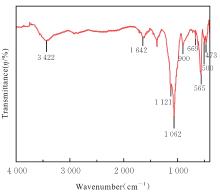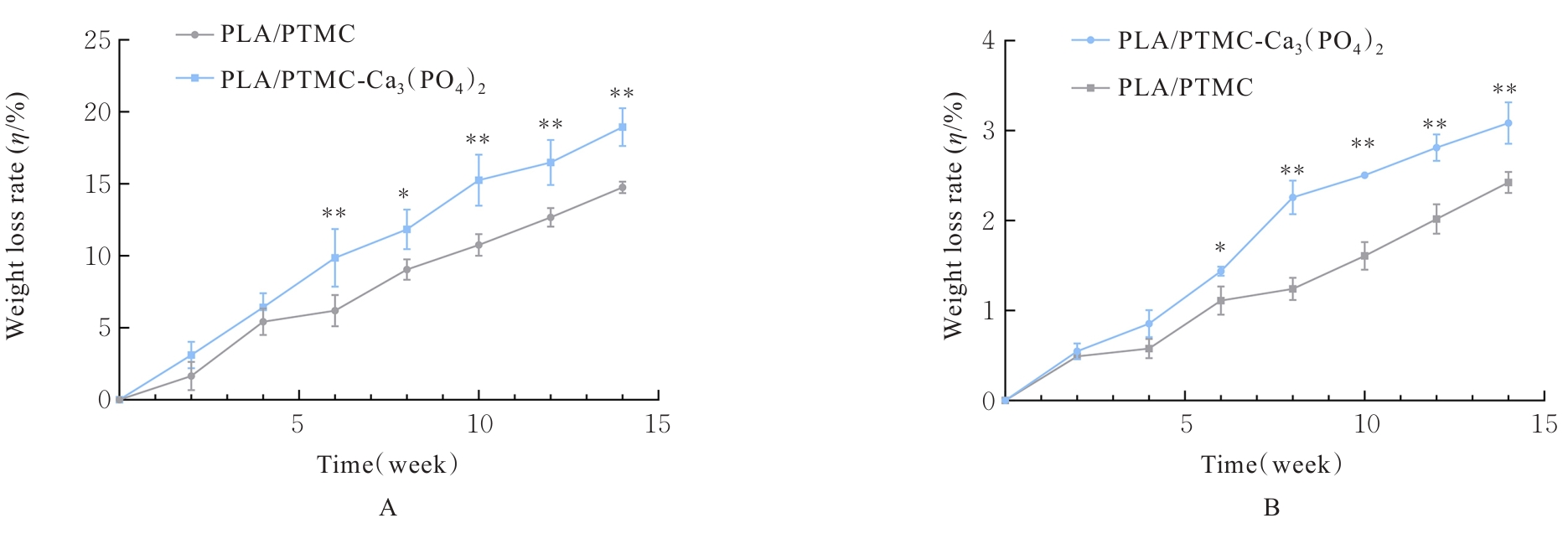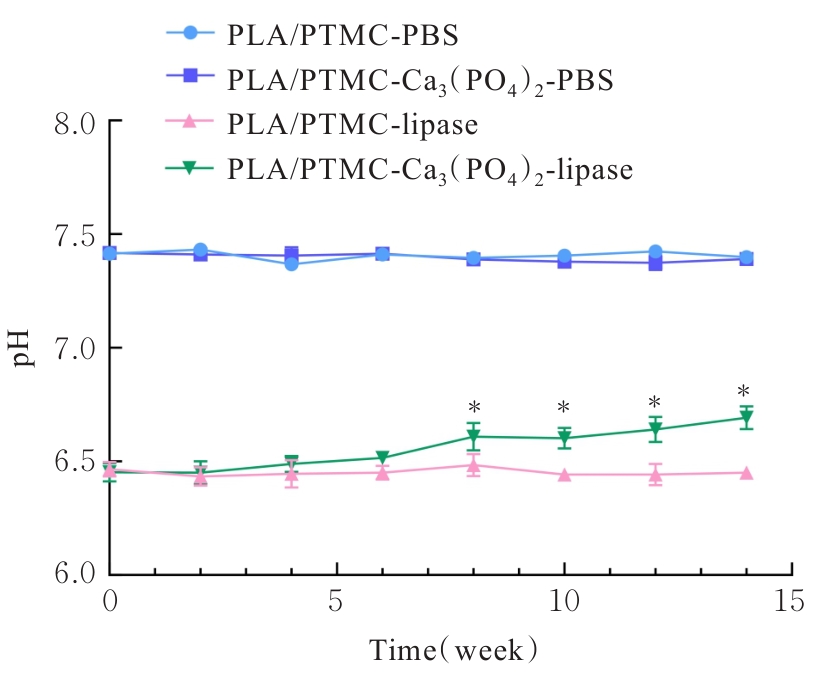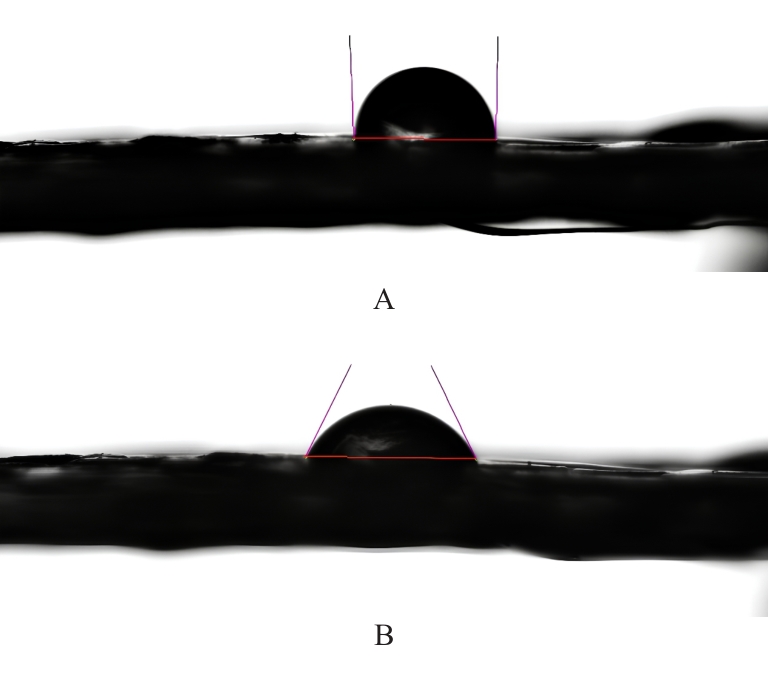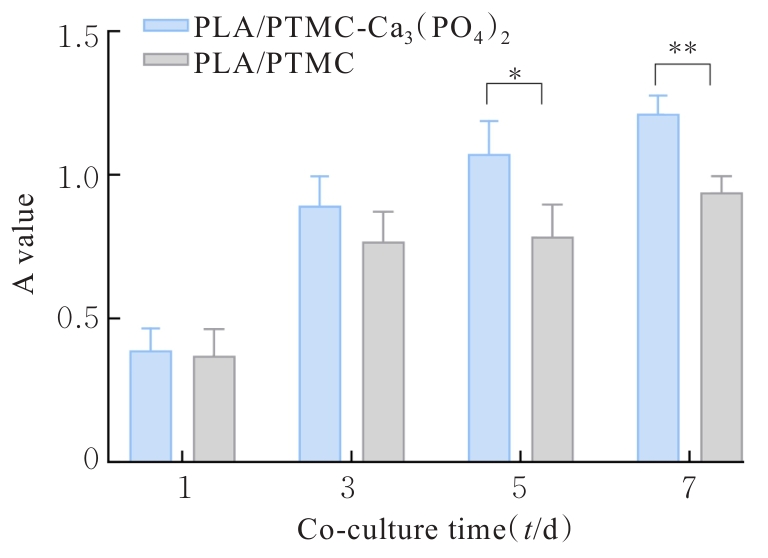| [1] |
Ye TIAN,Xiaolu SHI,Shaobo ZHAI,Yang LIU,Zheng YANG,Yuchuan WU,Shunli CHU.
Barrier function of PPC/PBS composite biofilm and its osteogenetic effect on tibial bone defect models of rabbits
[J]. Journal of Jilin University(Medicine Edition), 2024, 50(4): 1016-1025.
|
| [2] |
Liping LIU,Chiyu LI,Tao YANG,Shaoru WANG,Yun LIU,Guomin LIU,Zhiqiang CHENG,Yungang LUO,Zhihui LIU.
Biocompatibility of PTMC/PVP temperature-controlled shrinkage nanofiber membrane with mouse fibroblasts and its repairment effect on full-thickness skin defects in rats
[J]. Journal of Jilin University(Medicine Edition), 2024, 50(4): 939-946.
|
| [3] |
Kewen JIA,Yuemeng ZHU,Siyu CHEN,Minghui LI,Jiaqian YOU,Sheng CHEN,Yanmin ZHOU.
Application of autologous platelet-rich fibrin in immediate implant placement of molar with periapical periodontitis: A case report and literature review
[J]. Journal of Jilin University(Medicine Edition), 2024, 50(2): 536-544.
|
| [4] |
Xiaolu SHI,Ye TIAN,Shaobo ZHAI,Yang LIU,Shunli CHU.
Preparation of PPC/PBS-based guided bone regeneration membrane and evaluation of its physiochemical properties and biological characteristics
[J]. Journal of Jilin University(Medicine Edition), 2023, 49(6): 1473-1483.
|
| [5] |
Liyan CHEN,Jingguang LIN.
Preparation and biological properties of porous titanium alloy scaffolds treated by micro-arc oxidation/alkali and loaded with RGD peptide coating
[J]. Journal of Jilin University(Medicine Edition), 2023, 49(1): 84-93.
|
| [6] |
Qingyu ZHANG,Tingrui XU,Junjun JIAO,Degeng XIA,Tianyi ZHANG,Li ZHANG,Ning MA.
Preparation method of platelet-rich fibrin and hydroxyapatite complex and property evaluation
[J]. Journal of Jilin University(Medicine Edition), 2022, 48(6): 1448-1454.
|
| [7] |
Degeng XIA,Qingyu ZHANG,Junjun JIAO,Tingrui XU,Tianyi ZHANG,Yang ZHONG,Zhulan ZHAO,Ning MA,Li ZHANG.
Multidisciplinary aesthetic restoration of anterior dental area of patient with failed treatment experience: A case report and literature review
[J]. Journal of Jilin University(Medicine Edition), 2022, 48(4): 1058-1064.
|
| [8] |
Dongxiao BIAN,Xingfu BAO,Min HU.
Promotion effect of rabbit acellular cartilage matrix particles combined with SD rat adipose tissue-derived stem cells on endochondral osteogenesis
[J]. Journal of Jilin University(Medicine Edition), 2022, 48(4): 883-891.
|
| [9] |
Zhulan ZHAO,Qingyu ZHANG,Degeng XIA,Yang ZHONG,Tianyi ZHANG,Yu HUANG,Li ZHANG,Ning MA.
Clinical repair effect of combined orthodontic treatment with implant prosthesis in severe invasive periodontitis:A case report and literature review
[J]. Journal of Jilin University(Medicine Edition), 2021, 47(5): 1292-1297.
|
| [10] |
Rui WANG,Meihua LI,Wanlin ZHOU.
Preparation and bone-binding properties of 3D printed titanium alloy implants
[J]. Journal of Jilin University(Medicine Edition), 2021, 47(1): 82-88.
|
| [11] |
HUANG Yu, ZHAO Zhulan, ZHONG Yang, XU Lishuo, LIU Chenguang, MA Ning, ZHANG Li.
Soft tissue augmentation and bone regeneration combined with immediate implantation of patient with severe chronic periodontitis:A case report and literature review
[J]. Journal of Jilin University(Medicine Edition), 2020, 46(05): 1082-1086.
|
| [12] |
WU Naichao, HAN Qing, LI Shan, CHEN Bingpeng, ZHANG Aobo, LIU Yang, WANG Jincheng.
3D printing technology-assisted pre-operative design and reconstruction of elbow joint anatomy structure: A case report and literature review
[J]. Journal of Jilin University(Medicine Edition), 2019, 45(06): 1422-1426.
|
| [13] |
WANG Ningning, XU Zhimin, ZHENG Ye, ZHANG Yingxin, HAN Bing.
Preparation of polydopamine coated 3D printed biphasic calcium phosphate tissue engineering scaffold and its evaluation
[J]. Journal of Jilin University(Medicine Edition), 2019, 45(04): 955-959.
|
| [14] |
CHEN Chen, HAN Qing, CHEN Bingpeng, WANG Chenyu, ZHANG Kesong, YANG Kerong, WANG Jincheng.
Application of individualized semi-shoulder prosthesis for proximal humerus reconstruction under assistance of 3D printing technology
[J]. Journal of Jilin University(Medicine Edition), 2019, 45(03): 614-620.
|
| [15] |
ZHAO Yian, YANG Shuting, LI Yalong, LIU Guomin, SUN Shufen, LUO Yungang.
Preparation process of polylactic acid-glycolic acid copolymer/hydroxyapatite microcarrier by electrostatic spraying method and its effect evaluation
[J]. Journal of Jilin University(Medicine Edition), 2019, 45(02): 439-444.
|
 )
)
